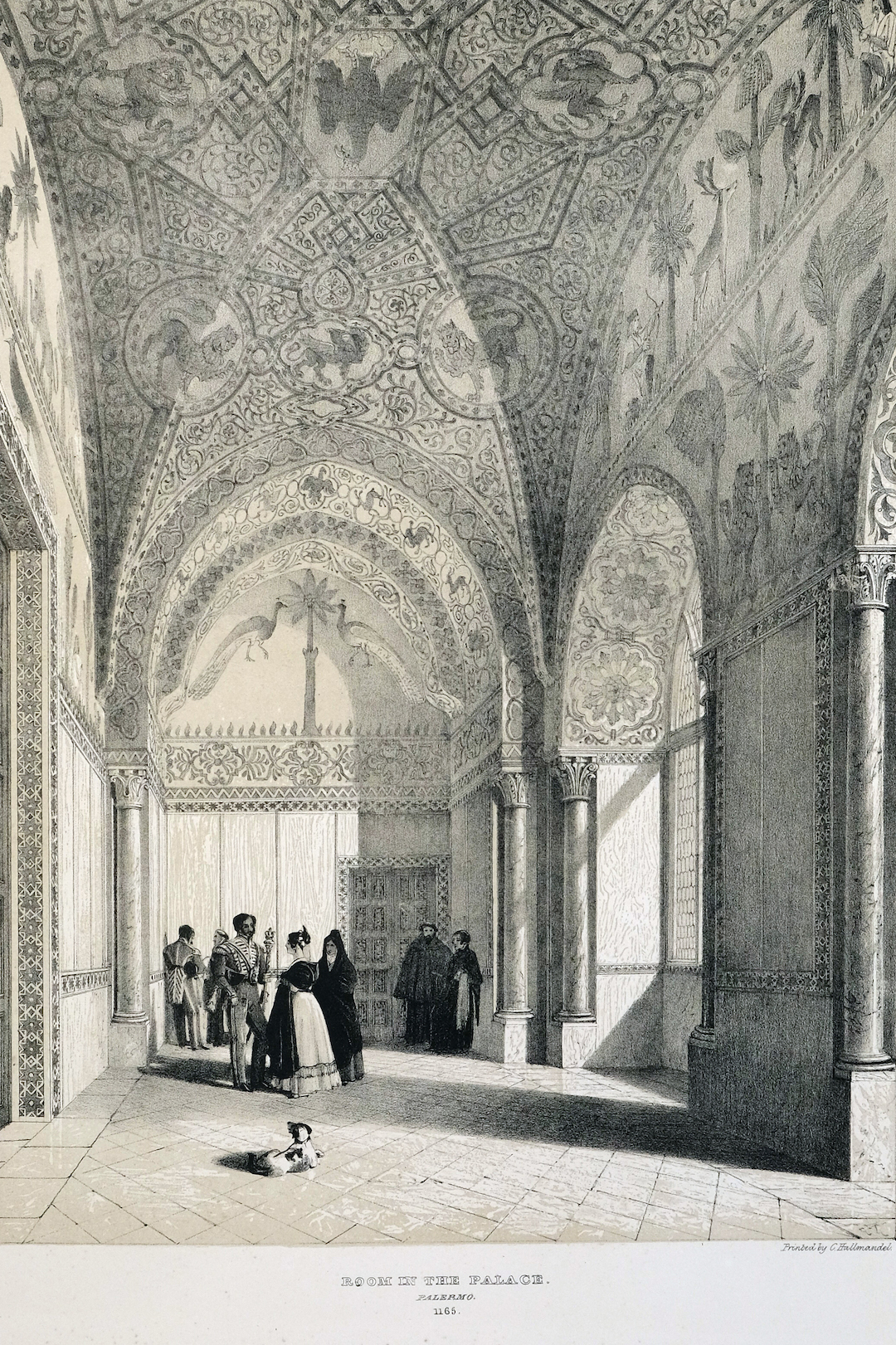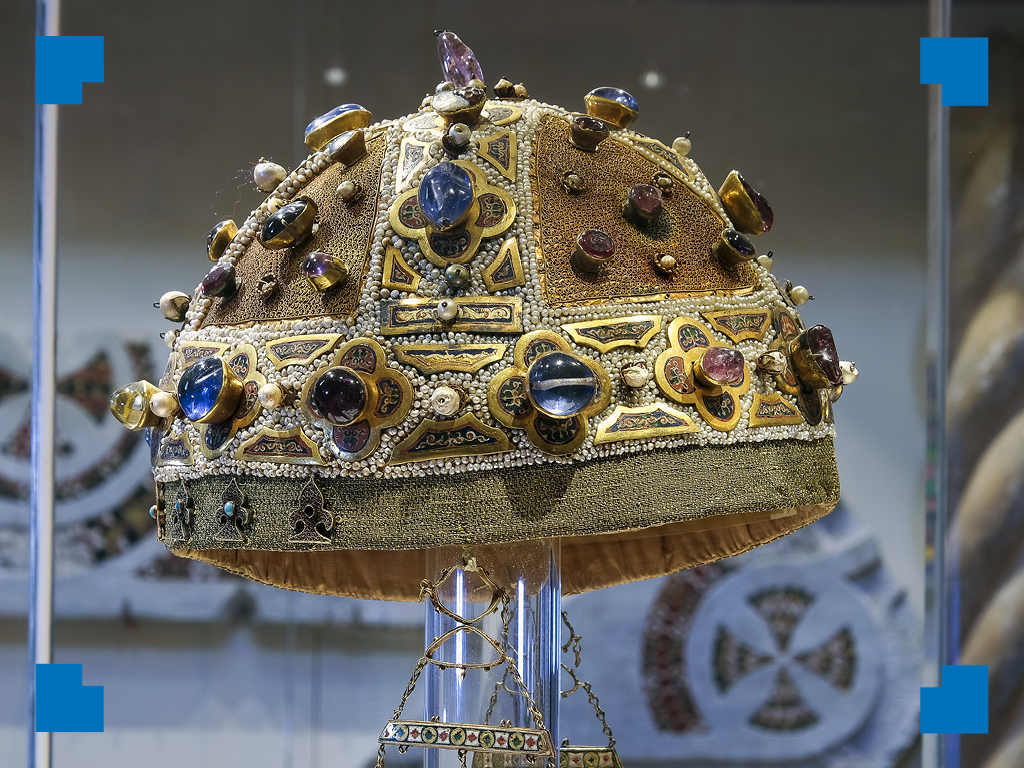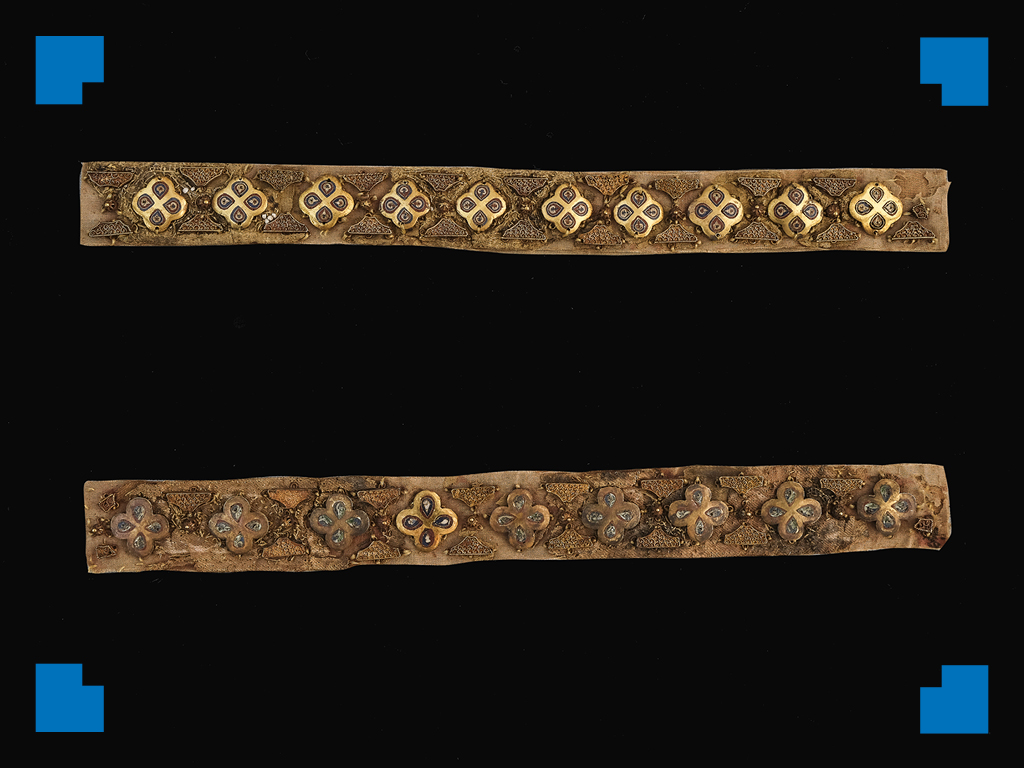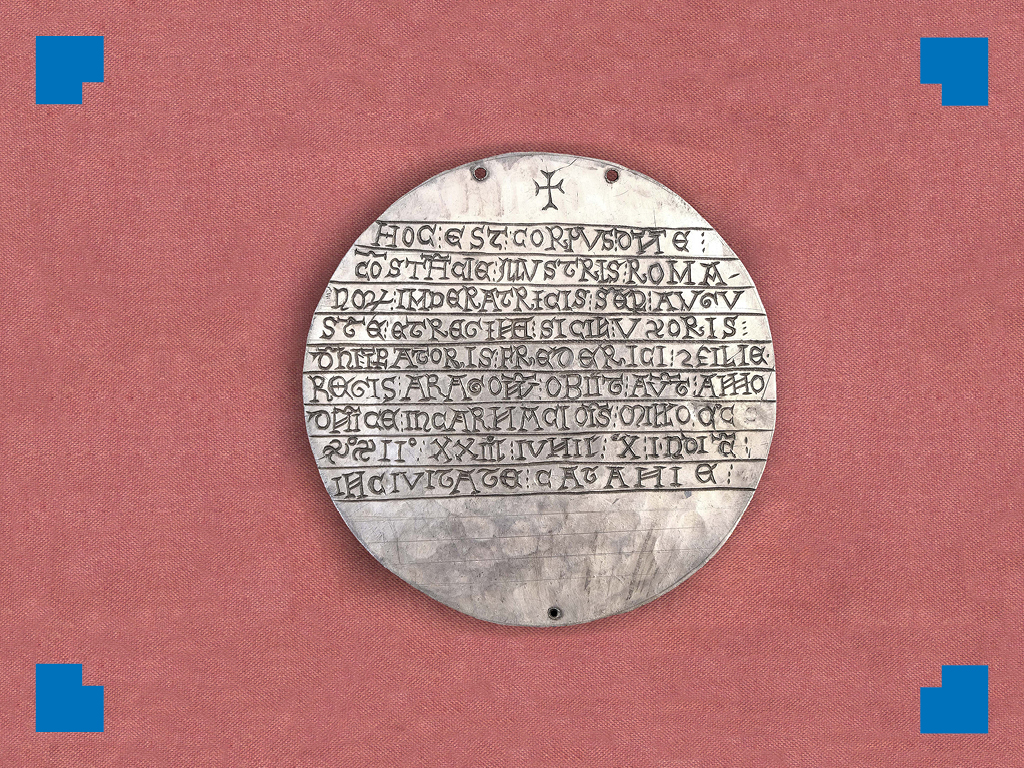
22. Saracenic and Norman remains, to illustrate the Normans in Sicily
Henry Gally Knight, London 1840
Saracenic and Norman remains, to illustrate the Normans in Sicily
(‘King Roger Hall’ in the Royal Palace)
printed book, lithograph on a drawing by George Moore (57×40 cm)
Palermo, Library of the Sicilian Regional Assembly, A723/2
Henry Gally Knight (1786-1846), an English scholar of medieval art and architecture, went to Sicily in 1836 with the aim of completing his research on Norman buildings, already conducted in France and England. The Normans in Sicily, published in London between 1838 and 1840, collects the results of his investigation in the island. The volume, in addition to reporting the testimonies of the author on the Norman remains he visited, offers a vivid narration of his journey through Sicily, fully in line with the literature of the Grand Tour. The work is embellished by a rich set of engravings, almost all taken from drawings by George Moore.
The so-called “Hall of King Roger” (father of Constance of Hauteville) is one of the most beautiful and famous halls of the Royal Palace of Palermo, characterized by the rich set of mosaics on a gold background showing a paradisiacal palm grove with wild animals and, in the center of the vault, the eagle with a hare in its talons, ancient symbol of power, which, however, has often been associated with Emperor Frederick II.
Focus – The Grand Tour
Young British nobles began to visit Italy for educational and cultural purposes already in the seventeenth century, thus initiating the European phenomenon of the Grand Tour. Starting from the last decades of the eighteenth century, on the wave of the editorial success in Europe of the travel diaries of Johann Hermann von Riedesel (1740-1785) from Germany and of Patrick Brydone (1736-1818) from Scotland, Sicily became part of the Tour, which until then had stopped in Naples, thus becoming the destination of regular waves of foreign visitors, fascinated by the idea of wild, exotic and untamed nature together with the remains of Greek architecture, evidence of an ancient cradle of the Mediterranean civilization. Many travelers published accounts of their journeys, which were enriched from the nineteenth century by the interest in the monuments of the medieval past. In that period, the adjective “Arab-Norman” started to be used to indicate the buildings resulting from the Western, Islamic and Byzantine multiculturalism of the Norman kingdom. The term today refers to the Sicilian circuit recognized as a UNESCO World Heritage Site, in Palermo, Monreale and Cefalù


